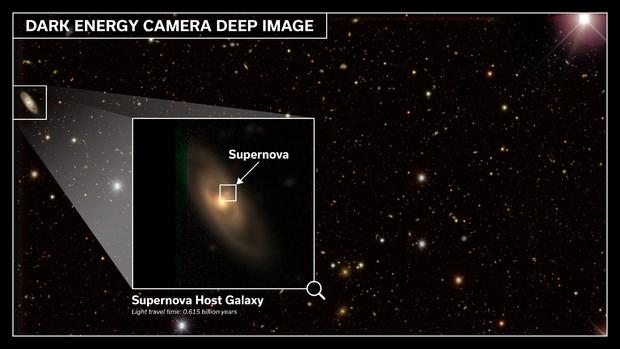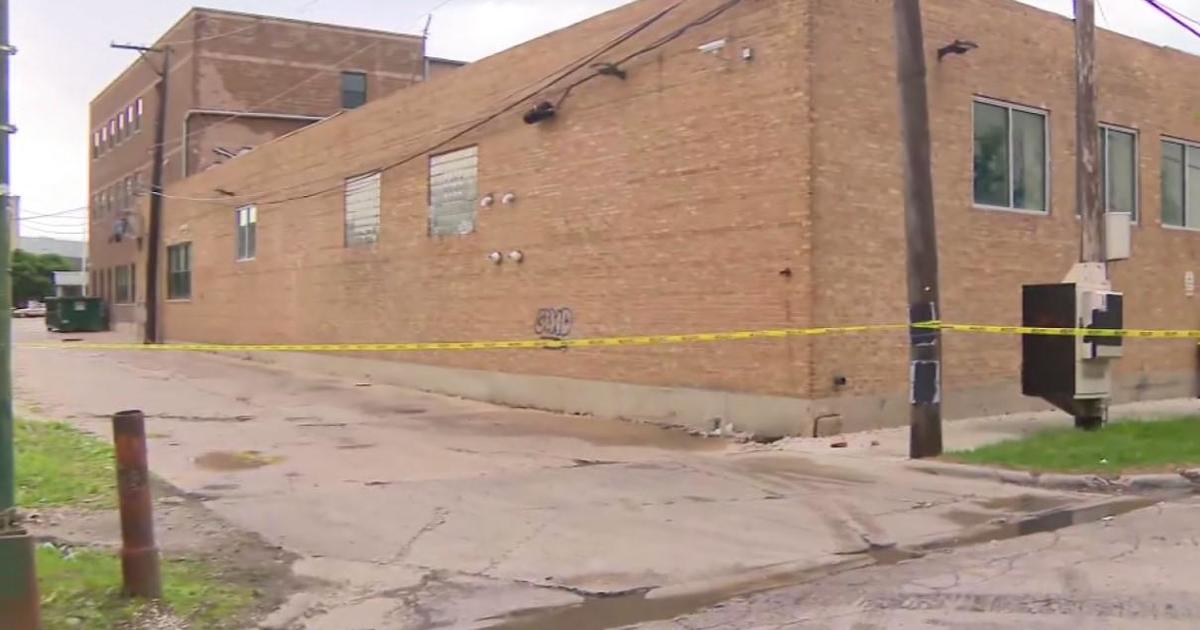New study: universe rapidly expanding, consistent with century-old Einstein theory
CHICAGO (CBS) -- Albert Einstein created a set of equations to predict the nature of our universe.
Over a century later, unprecedented results from a group of scientists are consistent with his equations – strengthening our understanding of what the universe is made out of and why it is rapidly expanding.
The group, Dark Energy Survey, (DES) is an international collaboration of over 400 cosmologists, astronomers, and astrophysics – including a handful of members located in Illinois. DES is led by the U.S. Department of Energy's Fermi National Accelerator Lab near west suburban Batavia.
The group has spent over a decade building a map of about one-eighth of the sky, in an effort to understand the mysteries of the universe, including dark matter and dark energy. They've also been tracking parts of the universe where they discovered supernovae, the powerful explosion of a star. These explosions help the group track the speed of the universe's expansion.
Cosmologists Maria Vincenzi and Dillon Brout are the lead authors of the final supernova results. For them, this moment is more than data.
"It's emotional for all of us," said Brout, an assistant professor in the Astronomy and Physics Departments at Boston University. "We finally reached that moment you don't get so often in this field."
"It's an incredibly enriching experience," said Vincenzi, a postdoctoral researcher at Duke University, who called the study "the combination of our work of many people throughout many years. Participating in an experiment like this is so big and so important,"she said.
First, what is dark matter and dark energy?
"It's always interesting to explain this because we are so used to talking about these things – but then, if you stop for a second and think about it – like gosh, this is mind-blowing," Vincenzi said.
A true scientist will tell you more is unknown than known about these two entities. According to NASA, dark matter makes up about 27% of the universe – and 68% is dark energy. These phenomena are "dark" because they aren't directly observable, but their impact on matter and energy is what we can see and study.
"It's this all-encompassing term that describes all possible theories for what it could be. It could be anti-gravity. It could be some other kind of repulsive energy. It could be something else entirely," Brout said. "Really, I would say, this term encompasses perhaps our ignorance because it makes up the vast majority of the universe."
On Earth – following Newton's law of gravitation – when you throw a ball up in the air, it must come down. Brout uses this analogy to visualize what dark energy does. Their results show that when you throw this theoretical ball up in space, dark energy accelerates the ball upwards.
Only in 1988 did astrophysicists first discover that the universe is expanding at an accelerating rate. This discovery was made by observing distant supernovae, showing that the universe expanded much more slowly a long time ago.
"The behavior of the universe as a whole is like a tug of war. On one side there's gravity, and on the other side there's this mysterious dark energy causing the universe to accelerate," Brout said. "[Dark Energy] didn't win the tug of war in the past, but today it is."
"This expansion is neither constant nor decelerating or slowing down, but it's actually the opposite– accelerating. It's going faster and faster," Vincenzi said. "That's the main question DES wanted to answer!"
According to the scientists' data, dark energy is consistent with the energy of empty space.
Back to Einstein and his equation
That's where Einstein's theory comes back in. Over 100 years ago, Einstein created his famous set of "field equations" for how matter and energy behave in space and time. In this equation, he put a variable that at one point he considered a "mistake."
The "mistake" is a variable called the "cosmological constant." Einstein put in his equation in an attempt to explain why the universe could not be static and unchanging.
"Really, it's quite elegant. He put it in there for reasons we may not fully understand today," Brout said. "He didn't know about dark energy. He didn't know about the accelerating universe."
What he did know, Brout said, is that there needed to be some type of repulsive energy in order for gravity to not collapse the universe into itself.
"But when he was confronted with the evidence that the universe is actually expanding, he realized he no longer needed that number in his equations, and famously – perhaps a rumor, perhaps truth – he called it his biggest blunder of his career," Brout said. "But now we've discovered that the universe is accelerating, and some energy that we find in our data is consistent with his original theory."
Machine learning's role in results
Maria Vincenzi spearheaded and implemented much of the machine learning into the final supernova results.
"The challenge for us was to train to teach the algorithm. That required creativity and a lot of effort from us," Vincenzi said. "As experiments become larger, automating these experiments becomes so essential."
Vincenzi taught the machine what she compares to a "spot-the-difference game – looking for new supernovae popping up, as well as different kinds of supernovae."
"Every white spot popping up and fading away is actually a supernova that lasted, that we followed up for several weeks," she said. "Every five years, we had roughly six months of observing the sky, then six months of pause and again and again," Vincenzi said.
"We're at the center," added Brout. "As you go out from the center you're looking out into the universe."
So, what's next?
Now that this project has come to an end, Brout and Vincenzi are leading the next "big thing" at the new Vera Reuben Observatory in Chile. Expected to light in January 2025, the pair will be part of the 10-year-long project, Legacy Survey of Space and Time (LSST).
Much like the DES supernovae project, LSST will map an even larger part of the sky with even better technology. The observatory has a 3,200-megapixel camera that will take 20 terabytes worth of photos every day, imaging the observable sky every three to four days.
Not only will LSST help scientists further understand dark matter and dark energy, but it will also map the Milky Way galaxy – and create an inventory of the solar system.




